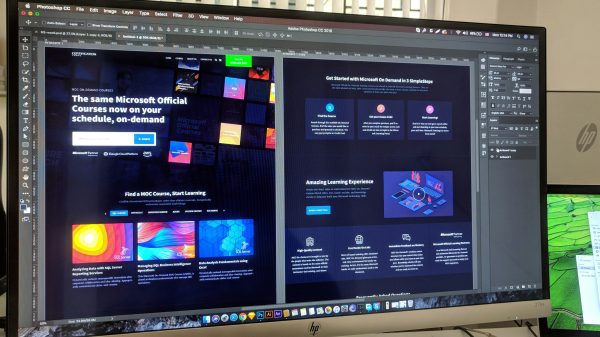E-commerce is a rapidly growing industry that has seen tremendous growth over the years. With the rise of smartphones and tablets, e-commerce has taken a new turn, and businesses are looking to create their e-commerce apps to tap into this growing market. Developing an e-commerce app for iOS devices is an excellent way to reach a vast audience and increase revenue. In this article, we will explore how to build an e-commerce app for iOS devices without coding.

Why Build an E-commerce App for iOS Devices?
Before we delve into the process of building an e-commerce app for iOS devices, let us first understand the benefits of having an e-commerce app. Here are some reasons why you should use an ecommerce iOS app builder.
- Reach a Wider Audience: With an e-commerce app, you can reach a broader audience, which can help you grow your business. People are increasingly using their smartphones and tablets to shop online, and an e-commerce app will allow them to browse and buy your products on the go.
- Increase Revenue: Having an e-commerce app can help you increase revenue by making it easier for customers to buy your products. It provides a seamless shopping experience, which can encourage customers to buy more from your business.
- Build Customer Loyalty: An e-commerce app can help you build customer loyalty by providing a personalized shopping experience. You can send push notifications about new products, discounts, and promotions, which can keep your customers engaged and coming back for more.
- Stand Out From Competitors: Building an e-commerce app can help you stand out from your competitors. It shows that you are a modern business that is dedicated to providing the best shopping experience to your customers.
Now that we have seen the benefits of having an e-commerce app, let us explore how to build an e-commerce app for iOS devices without coding.
Step 1: Choose an Ecommerce App Builder
The first step in building an e-commerce app for iOS devices is to choose an e-commerce app builder. There are several e-commerce app builders available, such as Shopify, WooCommerce, and Magento. These platforms provide easy-to-use tools that allow you to create an e-commerce app without any coding knowledge.
Shopify is one of the most popular e-commerce app builders that provides a simple and user-friendly interface. It allows you to create an e-commerce app from scratch or use one of their pre-designed templates. Shopify also provides a range of features such as payment gateways, shipping options, and inventory management.
WooCommerce is another popular e-commerce app builder that is designed for WordPress users. It provides a range of features such as customizable themes, payment gateways, and product management.
Magento is an open-source e-commerce platform that provides a range of features such as SEO optimization, product management, and payment gateways. It is designed for more advanced users and requires some technical knowledge.

Step 2: Choose a Template
After choosing an e-commerce app builder, the next step is to choose a template. Templates provide a pre-designed layout that you can use as a starting point for your e-commerce app. Most e-commerce app builders provide a range of templates that you can choose from.
When choosing a template, consider the following factors:
- User Experience: Choose a template that provides a seamless and intuitive user experience. The template should make it easy for customers to navigate your e-commerce app and find the products they are looking for.
- Design: Choose a template that reflects your brand and provides a professional look and feel. The template should also be visually appealing and easy on the eyes.
- Functionality: Choose a template that provides the functionality you need, such as product management, payment gateways, and shipping options.
Step 3: Customize Your E-commerce App
Once you have chosen a template, the next step is to customize your e-commerce app. Most e-commerce app builders provide drag-and-drop tools that allow you to customize your e-commerce app without any coding knowledge. Here are some of the things you can customize:
- Layout: Customize the layout of your e-commerce app by adding and removing sections, changing colors, and modifying fonts.
- Product Management: Add your products to your e-commerce app and manage them easily. You can add product descriptions, prices, and images.
- Payment Gateways: Choose a payment gateway that works for you and your customers. Most e-commerce app builders provide a range of payment gateways such as PayPal, Stripe, and Apple Pay.
- Shipping Options: Choose the shipping options that work for your business. You can set up shipping zones, rates, and delivery times.
- Push Notifications: Set up push notifications to keep your customers engaged and informed about new products, promotions, and discounts.
Step 4: Test Your E-commerce App
Once you have customized your e-commerce app, the next step is to test it. Most e-commerce app builders provide a preview mode that allows you to test your app before publishing it.
Make sure you test all the features of your e-commerce app, including product management, payment gateways, and shipping options. You should also test your app on different devices to ensure that it works seamlessly on all iOS devices.
Step 5: Publish Your E-commerce App
After testing your e-commerce app, the final step is to publish it. Most e-commerce app builders provide easy-to-follow instructions on how to publish your app on the App Store.
Before publishing your app, make sure you have optimized it for the App Store. This includes adding a compelling app description, screenshots, and keywords that will help your app rank higher in search results.
Building an e-commerce app for iOS devices without coding is an easy and cost-effective way to reach a wider audience, increase revenue, and build customer loyalty. With the right e-commerce app builder and template, you can create a professional-looking e-commerce app in just a few hours.
Follow the steps outlined in this article to build your e-commerce app for iOS devices, and start reaping the benefits of having an e-commerce app for your business.

































